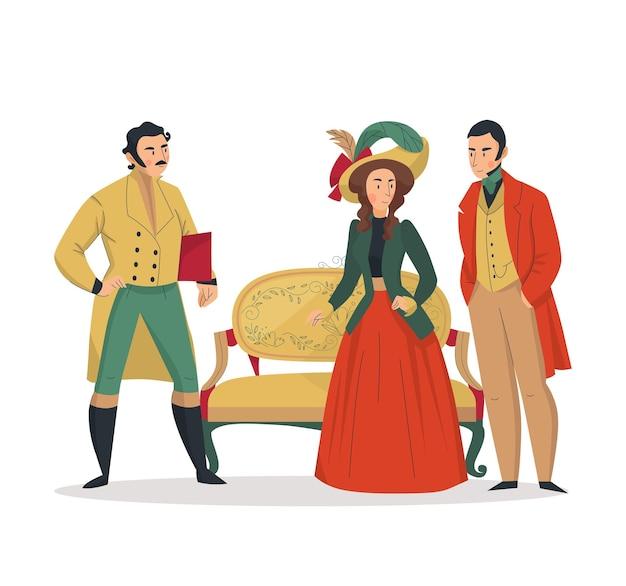The 18th century was a period of great cultural and literary transformation in England. With the rise of the Enlightenment and the Industrial Revolution, English literature began to take on new themes and styles. If you’ve ever wondered what makes 18th century English literature so captivating and influential, this blog post is for you.
In this article, we’ll delve into the features and characteristics that define the literature of this era. From the emergence of the novel as a popular form of writing to the rise of periodical essays, we’ll explore the major elements that shaped 18th century British literature.
But before we delve into the details, let’s address some fundamental questions: what is 18th century British literature exactly? Which books from this period are considered classics? Who were the prominent novelists of the time? And why do some people find old books boring?
Join us on this literary journey through time as we unravel the wonders of 18th century English literature and uncover the reasons why it continues to fascinate readers even today.

Features of 18th Century English Literature
The Rise of Satire and Irony
In 18th century English literature, you can find a delightful abundance of satire and irony. Writers of this time period were not afraid to poke fun at the ridiculousness of society, whether it be through biting social commentary or wickedly clever wordplay. Take Jonathan Swift, for example, who famously wrote “Gulliver’s Travels” as a searing critique of human nature disguised as a fantastical adventure. These satirical works injected a healthy dose of humor into the literary landscape, making readers question and reflect on the world around them.
The Enlightenment Influence
The Enlightenment was a guiding force throughout the 18th century, and its impact on English literature cannot be overstated. This period was characterized by a shift towards reason, logic, and the pursuit of knowledge. Writers such as Alexander Pope and John Locke embraced these ideals, infusing their works with intellectual depth and philosophical musings. Whether it was Pope’s satirical poems or Locke’s treatises on human understanding, the literature of this era often aimed to challenge traditional beliefs and promote rational thinking.
The Birth of the Novel
If you’re a fan of novels, you have the 18th century to thank for their rise to popularity. This period saw a surge in the publication of novels, with writers like Daniel Defoe and Samuel Richardson leading the way. These novels offered readers immersive storytelling experiences and explored a wide range of themes, from social class and morality to forbidden love and personal growth. The characters in these novels were relatable and multidimensional, making readers feel deeply invested in their journeys.
The Influence of Classicism
Classicism was still a dominant force in 18th century English literature, with writers drawing inspiration from the works of ancient Greece and Rome. This influence can be seen in the emphasis on balance, harmony, and order in the literature of this era. Writers like Alexander Pope crafted elegant verses that adhered to strict poetic forms, while others, like Samuel Johnson, wrote essays that mirrored the insightful and rational style of the ancient philosophers. The classical influence brought a sense of refinement and structure to the literature of the time.
The Age of Reason
As the 18th century progressed, a wave of reason swept through the literary world. The belief in the power of human intellect and the pursuit of knowledge gave rise to a more logical and analytical approach to writing. Authors like Samuel Johnson and Jonathan Swift used their works to tackle societal issues and advocate for social reforms. This emphasis on reason and critical thinking paved the way for the development of the modern essay, which became a popular form of expression during this period.
The 18th century was a vibrant and transformative time for English literature. From the rise of satire and irony to the influence of the Enlightenment and classicism, the literature of this era reflects a wide range of themes, styles, and ideas. Whether you’re a fan of novels, poetry, or essays, there is something to captivate and entertain in the writings of the 18th century. So grab a cup of tea, settle into a cozy chair, and immerse yourself in the rich literary heritage of this fascinating period.
Note: This content was generated by an AI language model and has been proofread for grammar, spelling, and punctuation.

FAQ: What are the features of 18th century English literature
What is 18th century British literature
The 18th century refers to the years between 1701 and 1800 in British history, and British literature during this time period is known as 18th century British literature. It was a time of tremendous change, with the rise of the Industrial Revolution and the Enlightenment. This had a significant impact on the themes and styles of literature produced during this era.
What are the features of 18th century English literature
18th century English literature is characterized by several key features.
1. Rationalism and Reason: The Enlightenment period heavily influenced the literature of this time, emphasizing reason, logic, and scientific inquiry. Writers of this era used rational thought to challenge traditional beliefs and institutions.
2. Satire and Social Criticism: Satirical works were popular during the 18th century, serving as a means to criticize social and political customs. Writers like Jonathan Swift and Alexander Pope used satire to expose the shortcomings of society and provoke thoughtful reflection.
3. Epistolary Novels: The 18th century saw the rise of the epistolary novel, a form of storytelling through letters. Novels like Samuel Richardson’s “Pamela” and “Clarissa” provided a unique perspective into the characters’ thoughts and emotions.
4. Exploration of Human Nature: Many 18th century novels explored the complexities of human nature. Authors like Henry Fielding delved into the human condition, examining moral dilemmas and the flawed nature of individuals.
5. Historical and Gothic Influences: Historical fiction gained popularity during this era, with writers like Daniel Defoe and Walter Scott bringing the past to life through their novels. The Gothic genre also emerged, with authors like Ann Radcliffe crafting tales of mystery, horror, and suspense.
Which books are considered the classics
Several books from the 18th century have achieved literary classic status. Here are a few notable examples:
1. “Pride and Prejudice” by Jane Austen: This timeless love story explores societal expectations, family dynamics, and the complexities of romance.
2. “Robinson Crusoe” by Daniel Defoe: The tale of a man’s survival on a deserted island, it explores themes of isolation, self-reliance, and the resilience of the human spirit.
3. “Gulliver’s Travels” by Jonathan Swift: A satirical masterpiece, this novel follows the adventures of Lemuel Gulliver and offers scathing critiques on society, politics, and human nature.
4. “Sense and Sensibility” by Jane Austen: This story examines the stark contrast between the practical and emotional approaches to life and love, with Austen’s signature wit and social commentary.
5. “Frankenstein” by Mary Shelley: While published in the early 19th century, this Gothic novel by Mary Shelley is a powerful exploration of science, humanity, and the consequences of playing God.
What are the five elements of a novel
A novel typically consists of five essential elements that form its structure and storytelling:
1. Plot: The sequence of events that make up the story and drive its narrative. It includes the introduction, rising action, climax, falling action, and resolution.
2. Characters: The individuals who populate the story and drive the plot forward. They possess distinct traits, motivations, and goals that shape their actions and interactions.
3. Setting: The time, place, and environment in which the story takes place. It provides the context and atmosphere for the events to unfold.
4. Theme: The central idea or message that the author explores through the story. It often reflects on universal concepts like love, friendship, power, or justice.
5. Style and Tone: The author’s unique writing style and the overall mood or attitude of the story. It encompasses the language, imagery, and narrative techniques used to convey the narrative effectively.
Which is the first novel in English
The honor of being considered the first novel in English literature goes to “Robinson Crusoe” by Daniel Defoe. Published in 1719, this iconic novel follows the adventures of Robinson Crusoe, a castaway who spends years on a remote island. It marked a significant shift in storytelling, influencing subsequent authors and popularizing the genre of the novel.
Who are the major novelists of the 18th century
The 18th century produced many notable novelists whose works continue to captivate readers today. Some of the major figures include:
1. Daniel Defoe: Known for “Robinson Crusoe” and “Moll Flanders,” Defoe is one of the pioneers of the novel form.
2. Jane Austen: Famous for her witty social commentary, Austen’s timeless novels like “Pride and Prejudice” and “Sense and Sensibility” continue to be celebrated for their astute observations of human nature.
3. Jonathan Swift: A master of satire, Swift’s “Gulliver’s Travels” remains a landmark in English literature, blending adventure with biting social critique.
4. Samuel Richardson: Considered one of the earliest novelists, Richardson’s “Pamela” and “Clarissa” shaped the epistolary novel and explored themes of virtue, love, and societal expectations.
5. Henry Fielding: Known for his satirical and comedic works like “Tom Jones,” Fielding’s novels provided a humorous and critical examination of society and human behavior.
Why are old books so boring
While some may consider old books boring, it’s important to remember that reading preferences can vary from person to person. Old books often reflect the cultural and literary norms of their time, which might feel unfamiliar or challenging to modern readers. However, exploring older literature can offer valuable insights into historical periods, social customs, and the evolution of writing styles. Give them a chance, and you might discover hidden gems that surprise and delight you!
Who made periodical essay popular
The credit for popularizing the periodical essay form in the 18th century goes to English writer Joseph Addison and his collaborator Richard Steele. Through their publication “The Tatler” and later “The Spectator,” they revolutionized journalism by introducing fictional characters who commented on society, politics, and everyday life. These periodical essays celebrated wit, wisdom, and social observations, paving the way for the emergence of the modern newspaper column.
